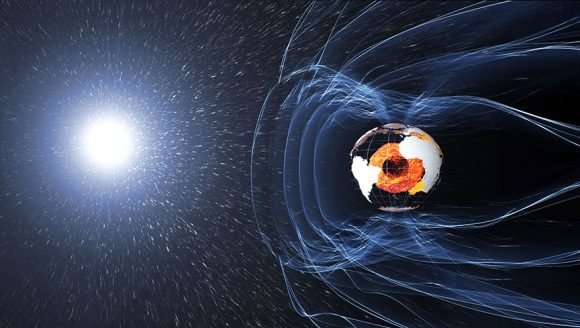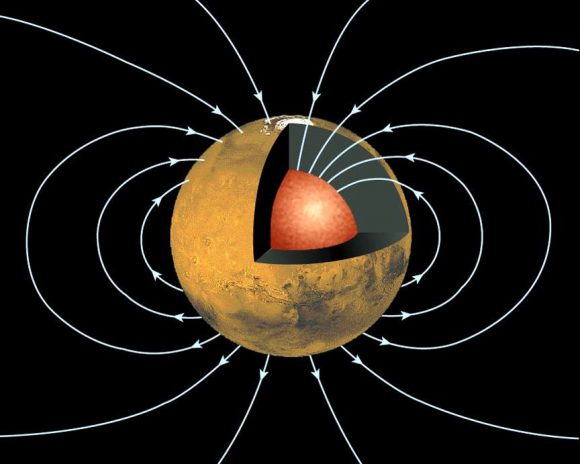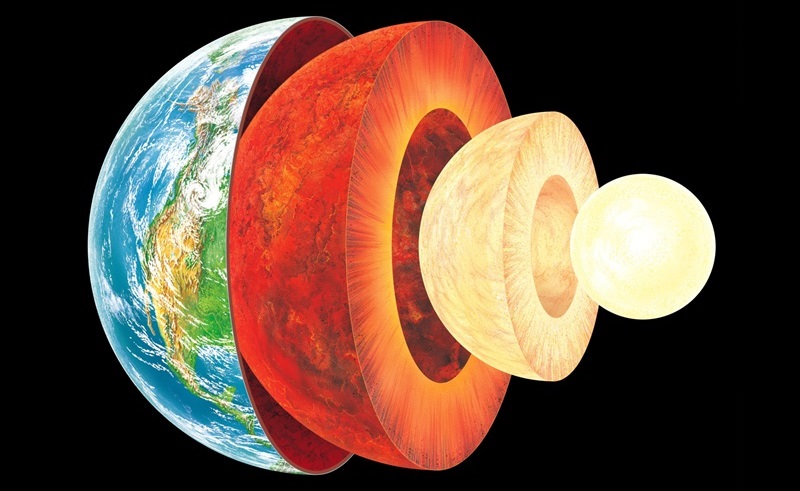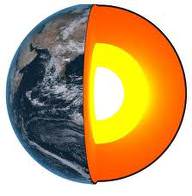Whether or not a planet has a magnetic field goes a long way towards determining whether or not it is habitable. Whereas Earth has a strong magnetosphere that protects life from harmful radiation and keeps solar wind from stripping away its atmosphere, planet’s like Mars no longer do. Hence why it went from being a world with a thicker atmosphere and liquid water on its surface to the cold, desiccated place it is today.
For this reason, scientists have long sought to understand what powers Earth’s magnetic field. Until now, the consensus has been that it was the dynamo effect created by Earth’s liquid outer core spinning in the opposite direction of Earth’s rotation. However, new research from the Tokyo Institute of Technology suggests that it may actually be due to the presence of crystallization in the Earth’s core.
The research was conducted by scientists from the Earth-Life Science Institute (ELSI) at Tokyo Tech. According to their study – titled “Crystallization of Silicon Dioxide and Compositional Evolution of the Earth’s Core“, which appeared recently in Nature – the energy that drives the Earth’s magnetic field may have more to do with the chemical composition of the Earth’s core.

Of particular concern for the research team was the rate of which Earth’s core cools over geological time – which has been the subject of debate for some time. And for Dr. Kei Hirose – the director of the Earth-Life Science Institute and lead author on the paper – it has been something of a lifelong pursuit. In a 2013 study, he shared research findings that indicated how the Earth’s core may have cooled more significantly than previously thought.
He and his team concluded that since the Earth’s formation (4.5 billion years ago), the core may have cooled by as much as 1,000 °C (1,832 °F). These findings were rather surprising to the Earth sciences community – leading to what one scientists referred to as the “New Core Heat Paradox“. In short, this rate of core cooling would mean that some other source of energy would be required to sustain the Earth’s geomagnetic field.
On top of this, and related to the issue of core-cooling, were some unresolved questions about the chemical composition of the core. As Dr. Kei Hirose said in a Tokyo Tech press release:
“The core is mostly iron and some nickel, but also contains about 10% of light alloys such as silicon, oxygen, sulfur, carbon, hydrogen, and other compounds. We think that many alloys are simultaneously present, but we don’t know the proportion of each candidate element.”

In order to resolve this, Hirose and his colleagues at ELSI conducted a series of experiments where various alloys were subjected to heat and pressure conditions similar to that in the Earth’s interior. This consisted of using a diamond anvil to squeeze dust-sized alloy samples to simulate high pressure conditions, and then heating them with a laser beam until they reached extreme temperatures.
In the past, research into iron alloys in the core have focused predominantly on either iron-silicon alloys or iron-oxide at high pressures. But for the sake of their experiments, Hirose and his colleagues decided to focus on the combination of silicon and oxygen – which are believed to exist in the outer core – and examining the results with an electron microscope.
What the researchers found was that under conditions of extreme pressure and heat, samples of silicon and oxygen combined to form silicon dioxide crystals – which were similar in composition to mineral quartz found in the Earth’s crust. Ergo, the study showed that the crystallization of silicon dioxide in the outer core would have released enough buoyancy to power core convection and a dynamo effect from as early on as the Hadean eon onward.
As John Hernlund, also a member of ELSI and a co-author of the study, explained:
“This result proved important for understanding the energetics and evolution of the core. We were excited because our calculations showed that crystallization of silicon dioxide crystals from the core could provide an immense new energy source for powering the Earth’s magnetic field.”

This study not only provides evidence to help resolve the so-called “New Core Heat Paradox”, it also may help advance our understanding of what conditions were like during the formation of Earth and the early Solar System. Basically, if silicon and oxygen form crystal of silicon dioxide in the outer core over time, then sooner or later, the process will stop once the core runs out of these elements.
When that happens, we can expect Earth’s magnetic field will suffer, which will have drastic implications for life on Earth. It also helps to put constraints on the concentrations of silicon and oxygen that were present in the core when the Earth first formed, which could go a long way towards informing our theories about Solar System formation.
What’s more, this research may help geophysicists to determine how and when other planets (like Mars, Venus and Mercury) still had magnetic fields (and possibly lead to ideas of how they could be powered up again). It could even help exoplanet-hunting science teams determine which exoplanets have magnetospheres, which would allow us to find out which extra-solar worlds could be habitable.
Further Reading: Tokyo Tech News, Nature.




